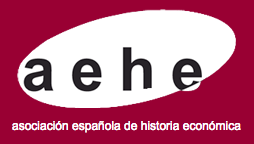Vicios privados, virtudes públicas: ingresos fiscales de la Real Hacienda de Chile a fines del periodo colonial
DOI:
https://doi.org/10.33231/j.ihe.2022.10.001Palabras clave:
Real Hacienda, Crecimiento económico, Chile, Siglos XVIII-XIX, N16, N36, N46, N76Resumen
Este artículo examina la evolución y financiamiento de la Real Hacienda de Chile de las últimas décadas coloniales a través de informes elaborados por contadores de las contadurías mayores de esta capitanía y Perú. Los resultados muestran que el crecimiento del tesoro chileno se explicó tanto por el buen desempeño económico como por las medidas fiscales derivadas de las reformas emprendidas, sobre todo tras adoptarse las Ordenanzas de Intendentes (1786-1787). Como consecuencia, el erario regio chileno se engrosó mediante una recaudación cada vez mayor de contribuciones directas, en contraste a otros espacios hispanoamericanos donde aquellas indirectas marcaron el curso de la hacienda. Aunque sin prescindir del componente fiscal regresivo, tal como se confirma en el 40 % que representó de este erario el conjunto de ramos que gravó el consumo arraigado en «vicios» de la población chilena, lo que indica una profunda mercantilización de los hogares de menores ingresos.
Descargas
Descargas
Publicado
Cómo citar
Número
Sección
Licencia
Derechos de autor 2022 Juan José Martínez Barraza

Esta obra está bajo una licencia internacional Creative Commons Atribución-NoComercial-SinDerivadas 4.0.
Aquellos autores/as que tengan publicaciones con esta revista, aceptan los términos siguientes
- Los autores/as conservarán sus derechos de autor y garantizarán a la revista el derecho de primera publicación de su obra, el cuál estará simultáneamente sujeto a la Licencia de reconocimiento de Creative Commons Reconocimiento-No comercial-Sin obra derivada 4.0 Internacional que permite a terceros compartir la obra siempre que se indique su autor y su primera publicación esta revista, y no permite hacer uso comercial de la misma ni tampoco obras derivadas.
- Los autores/as podrán adoptar otros acuerdos de licencia no exclusiva de distribución de la versión de la obra publicada (p. ej.: depositarla en un archivo telemático institucional o publicarla en un volumen monográfico) siempre que se indique la publicación inicial en esta revista.
Plagio y fraude científico
La publicación de un trabajo que atente contra los derechos de propiedad intelectual será responsabilidad de los autores/as, que serán los que asuman los conflictos que pudieran tener lugar por razones de derechos de autor. Los conflictos más importantes pueden darse por la comisión de plagios y fraudes científicos.
Se entiende por plagio:
- Presentar el trabajo ajeno como propio.
- Adoptar palabras o ideas de otros autores sin el debido reconocimiento.
- No emplear las comillas u otro formato distintivo en una cita literal.
- Dar información incorrecta sobre la verdadera fuente de una cita.
- El parafraseo de una fuente sin mencionar la fuente.
- El parafraseo abusivo, incluso si se menciona la fuente.
Las prácticas constitutivas de fraude científico son las siguientes:
- Fabricación, falsificación u omisión de datos y plagio.
- Publicación duplicada.
- Conflictos de autoría.





